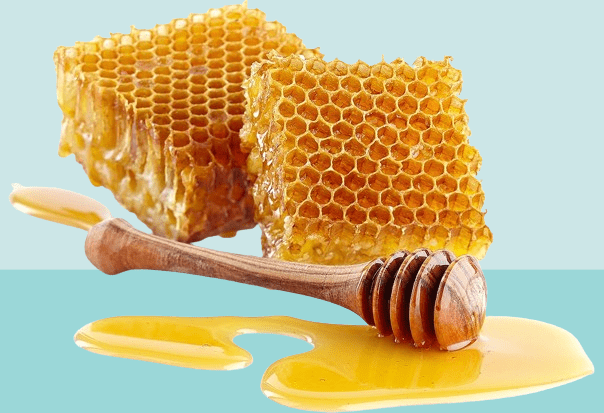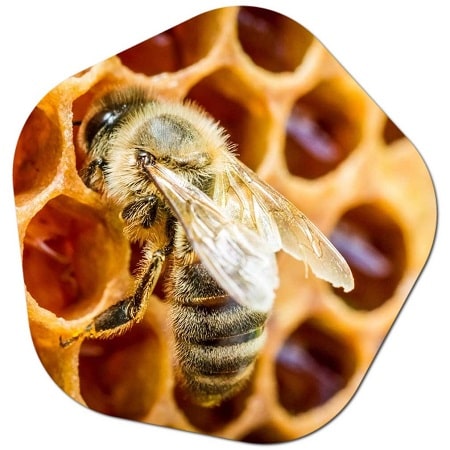How can you tell if honey is real or fake?
If the honey you add to warm water remains undissolved, it is real. Real honey stretches when you spoon it, if it remains solid on your spoon, it is fake. Real honey is candied. It is real if it turns into cream or butter when kept in the refrigerator for a long time. How can you recognize real honey? The consistency of both honeycomb and regular honey is very important, as real honey has a dense consistency and does not melt easily. At home, add a spoonful of honey to a glass of water or milk and observe. If the honey takes a long time to melt, it is likely to be genuine honey.
Detecting real honey from fake or adulterated honey can be challenging, but there are several methods and indicators that can help you make a more informed assessment. Keep in mind that some of these methods may require specialized equipment, and the results may not be foolproof. Here are some ways to help distinguish real honey from fake:

- Read the Label:
- Check the label for information about the honey’s origin, source, and processing. Look for specific details about the type of honey and its production methods.
- Pure Honey Characteristics:
- Real honey often crystallizes over time. If your honey has crystallized, it’s a good sign that it is pure. However, this alone does not guarantee purity.
- Smell and Taste:
- Real honey has a distinctive aroma and flavor that can vary depending on the type of flowers the bees visited. Fake honey may lack this complexity or have an off-putting smell.
- Water Test:
- Place a tablespoon of honey in a glass of water. Real honey should settle to the bottom, while fake honey may dissolve or mix with water.
- Thumb Test:
- Place a small drop of honey on your thumb. If it spreads or spills, it may not be pure honey. Real honey tends to stay intact.
- Paper Towel Test:
- Put a drop of honey on a paper towel. Real honey should not be absorbed by the paper towel or leave a wet mark.
- Burn Test:
- Dip the tip of a matchstick into honey and then strike it against the matchbox. Real honey is flammable and should ignite the match easily. Fake honey may not catch fire.
- Microscopic Examination:
- Professional laboratories can conduct microscopic analysis to identify impurities, pollen content, and other characteristics that distinguish real honey.
- Pollen Analysis:
- Real honey contains pollen from the flowers the bees visited. Pollen analysis can be performed by a specialized laboratory to verify the honey’s authenticity.
- Price and Source:
- Extremely low prices may indicate adulteration or poor quality. Purchase honey from reputable sources or local beekeepers to increase the likelihood of getting real honey.
Keep in mind that some sophisticated adulteration methods may be challenging to detect without laboratory analysis. If you are uncertain about the authenticity of your honey, you can send a sample to a reputable laboratory for testing.
What does 100% pure honey look like?
Honey, which dates back thousands of years, finds a place on our tables today with its taste and many benefits for the body. Honey, one of the most demanded foods, can be produced in unnatural ways. For this reason, the question of how to recognize natural honey is very important in terms of consuming healthy and real honey.

The story that started spontaneously in tree hollows continues today with controlled and systematic production in honeycombs. It is possible to consume the honey produced as strained or honeycombed according to preference. Strained honey is the honey obtained by removing the glaze layer that bees weave around the honeycomb during the honey making process and filtering the honey in the honeycomb by centrifugation method.
Pure honey can vary in appearance depending on factors such as the type of flowers the bees visited, the region where it was produced, and how it has been processed. However, there are some general characteristics that can help you identify 100% pure honey:
- Color: The color of pure honey can range from nearly colorless to dark amber, and it can even have a greenish or reddish hue. The color is influenced by the types of flowers the bees pollinated. For example, clover honey is typically lighter, while honey from buckwheat or chestnut flowers can be darker.
- Texture: Pure honey has a smooth and uniform texture. It is not gritty or grainy when you rub it between your fingers. Over time, pure honey may crystallize, forming small sugar crystals. Crystallization is a natural process and does not indicate impurity.
- Consistency: Real honey has a thick and viscous consistency. When you pour it, it should flow slowly and form a continuous stream, without breaking into separate droplets immediately.
- Aroma: Pure honey has a distinct and pleasant aroma that can vary based on the floral sources. Different types of honey may have different aromatic profiles.
- Taste: The taste of pure honey is sweet, but it can also have unique flavor notes depending on the flowers visited by the bees. It might have floral, fruity, or herbal undertones.
- Clarity: While some types of honey are naturally cloudy, pure honey is generally clear and free from impurities. It should not contain visible particles, debris, or air bubbles.
- No Added Ingredients: Pure honey contains only one ingredient – honey. It should not contain added sugars, syrups, water, or other substances.
- Packaging and Labeling: Reputable producers of 100% pure honey provide clear information on the label about the honey’s origin, processing methods, and whether it has been filtered or pasteurized.
Remember that the characteristics of honey can vary based on its source and processing, so there might be subtle differences between different types of pure honey. If you’re unsure about the authenticity of the honey, buying from reputable sources or local beekeepers can increase the likelihood of getting a genuine product.
Can fake honey crystallize? Natural honey crystallizes in a normal process and in a short time after it is taken from the hive. However, in fake honey, this crystallization does not occur for a long time. How does the crystallization of real honey vary? Honey becomes suitable for crystallization when it is separated from the hive, which is its natural environment. How to recognize fake and real honey? Differences between
How to Test Fake Honey vs Real Honey?
Does It Freeze?: Real honey freezes in cold weather. Especially honey freezes at the bottom of the container. However, adulterated honey does not freeze in cold weather.
Sugaring: Honey crystallizes, especially if it sits for a long time. This is called sugaring. If the honey you keep in your refrigerator crystallizes to the consistency of butter after about 30 days, it is natural. Contrary to popular belief, natural honey candies. However, if it remains the same consistency and appearance as the first day without any change, your honey is probably fake.
Does it burn?: Another method to ensure the naturalness of honey is the burning test. If it burns when you try to burn the honey, it is natural honey. Natural honey burns, but honey with additives usually does not.
Paper Towel: When you pour honey on a paper towel, if the paper towel absorbs the honey, your honey is adulterated. Because natural honey is not absorbed by the paper towel.
Taste: Natural honey burns the nasal passages when eaten a little too much. After eating it, you will feel its taste on your palate for about 20 seconds. If it does not burn your nasal passages and the taste does not stay on your palate, your honey is probably adulterated.
Odor: When you smell natural honey, you will not smell any odor. If you smell a clear odor, your honey is not real honey.
Color: Natural honey is not very light in color. It has a slightly darker color. Fake honey is usually lighter in color.





